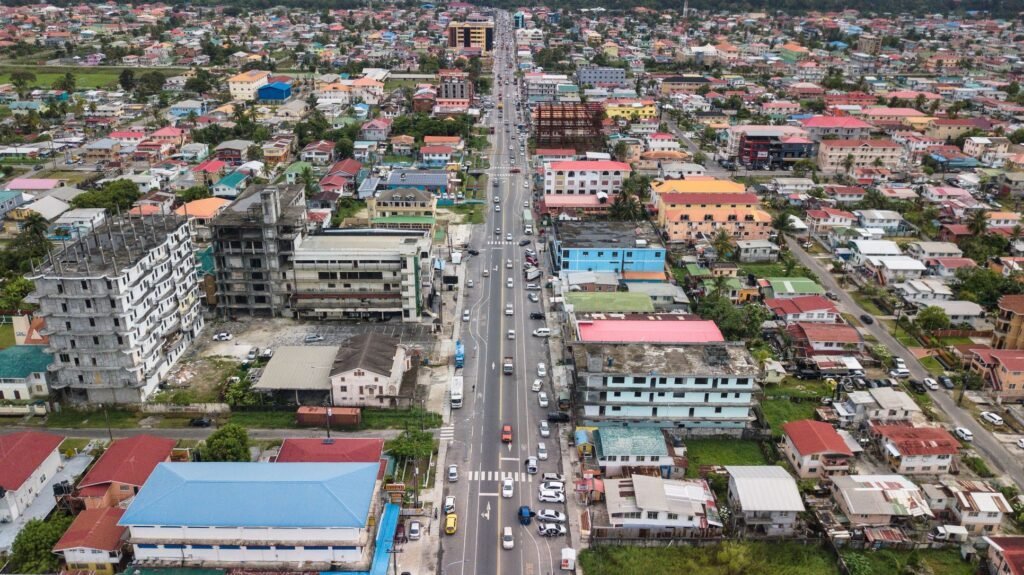Close

Region Three (Essequibo Islands–West Demerara) is rapidly transforming into Guyana’s new industrial hub, driven by strategic investments and visionary planning from the Government of Guyana. With over US$1 billion in combined public and private investment already mobilized, the region is a shining example of the administration’s goal to decentralize development and ensure national prosperity for all citizens (DPI).
At the core of this transformation is the development of the Port of Vreed-en-Hoop, which includes an offshore support base and fabrication yard that will directly service the oil and gas sector. This facility is expected to reduce shipping costs and create hundreds of new jobs while stimulating downstream industrial activity (DPI).
The region is also benefiting from major infrastructure upgrades. A G$15.1 billion four-lane highway is under construction from Schoonord to Crane, aimed at improving mobility, logistics, and regional connectivity (News Room). In addition, 74 new roads valued at G$1.3 billion are being developed across key communities like La Parfaite Harmonie and West Minster, fulfilling commitments to enhance local infrastructure (Kaieteur News).
Region Three is central to the Government’s flagship Gas-to-Energy project, which will halve electricity costs, enhance manufacturing capabilities, and support the production of natural gas liquids for domestic use. This project is viewed as a game-changer for the local and national economy (Stabroek News).
Beyond industrial development, the Government is ensuring social upliftment. A $14 billion, 75-bed hospital at De Kinderen is under construction to provide world-class healthcare services. At the same time, over 15,000 house lots are expected to be distributed in areas like Leonora and Wales by 2025, in line with national housing targets (Guyana Chronicle).
Other initiatives include a $30 million marine facility at Nismes to support fisheries and riverine transport, and major expansions at the Parika stelling to boost agriculture exports. Youths are also being engaged in agribusiness ventures to stimulate rural entrepreneurship (Guyana Times).
In sum, Region Three is evolving into a diversified economic powerhouse. Through bold investment, targeted policies, and people-centered development, the Government of Guyana is laying the foundation for a modern industrial future—one that includes every citizen.

The Guyana Project is an independent media platform delivering fact-checked, ground-level reporting on politics, economy, and public life in Guyana. With a focus on transparency and development, we bring unfiltered news and thoughtful analysis to help shape a more informed, forward-looking nation.


Lorem Ipsum is simply dummy text of the printing and typesetting industry. Lorem Ipsum has been the industry’s standard dummy text ever since the 1500s, when an unknown printer took a galley of type and scrambled it to make a type specimen book. It has survived not only five centuries, but also the leap into electronic typesetting, remaining essentially unchanged. It was popularised in the 1960s with the release of Letraset sheets containing Lorem Ipsum passages, and more recently with desktop publishing software like Aldus PageMaker including versions of Lorem Ipsum.
t is a long established fact that a reader will be distracted by the readable content of a page when looking at its layout. The point of using Lorem Ipsum is that it has a more-or-less normal distribution of letters, as opposed to using ‘Content here, content here’, making it look like readable English. Many desktop publishing packages and web page editors now use Lorem Ipsum as their default model text, and a search for ‘lorem ipsum’ will uncover many web sites still in their infancy. Various versions have evolved over the years, sometimes by accident, sometimes on purpose (injected humour and the like).
Contrary to popular belief, Lorem Ipsum is not simply random text. It has roots in a piece of classical Latin literature from 45 BC, making it over 2000 years old. Richard McClintock, a Latin professor at Hampden-Sydney College in Virginia, looked up one of the more obscure Latin words, consectetur, from a Lorem Ipsum passage, and going through the cites of the word in classical literature, discovered the undoubtable source. Lorem Ipsum comes from sections 1.10.32 and 1.10.33 of “de Finibus Bonorum et Malorum” (The Extremes of Good and Evil) by Cicero, written in 45 BC. This book is a treatise on the theory of ethics, very popular during the Renaissance. The first line of Lorem Ipsum, “Lorem ipsum dolor sit amet..”, comes from a line in section 1.10.32.